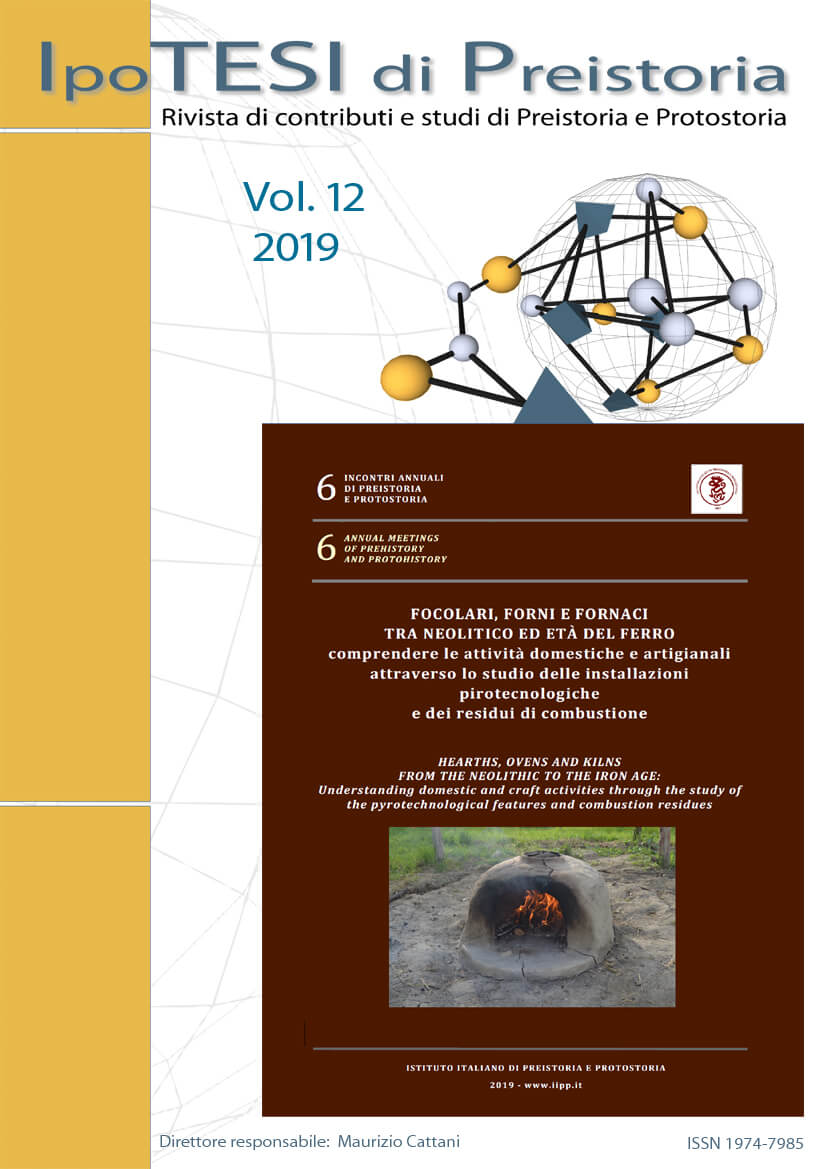Firing structures from the Copper Age site of Frigento
DOI:
https://doi.org/10.6092/issn.1974-7985/10257Keywords:
ceramic technology, archeometry, metal ages, ovens, kilnsAbstract
Between 2016 and 2018, during the road construction works from Lioni to Grottaminarda, excavation campaigns were carried out in the locality of Mefite in the territory of Frigento. Archaeological investigations revealed a prehistoric settlement, including a necropolis, dating between the Ancient Eneolithic and the beginning of the Ancient Bronze Age. Settlement features consisted of huts, fire structures and 7 pit-graves. The fire structures were located both near the huts and the funerary area where it is worth to mention a fireplace structure made of clay sub-circular in shape and with a diameter of around 2 meters located at a depth of 20-25 centimeters; it was situated in the north west area of one of the graves. Charcoal concentrations were all around the structure where fragments of animal bones and ceramics and also lithic findings were found. Such a structure, characterized by a huge concentration of reddish orange fire clay, was used repeatedly. The proto-historic ceramics in relation with this fireplace goes back to the first phase of Ancient Eneolithic. It is similar to Early and Middle Bronze Age structures from Emilia Romagna and other sites in northern and southern Italy. Based on these comparisons, our structure could be considered as one of the most ancient fireplace structure or food preparation. However, outside and connected to it, two elliptic post-holes (30-40 cm diameter and 20 cm deep) and two circular post-holes (10 centimeters diameter and 10 deep) were found. All of them were probably wooden supports for cooking and smoking food. At the beginning the fire structure was built for a social and multifunctional use but later,when the area became a necropolis, it probably acquired a religious value. The archeometrical analysis demonstrate the use of local clay for the construction of the plate, whose surface reached maximum 500 °C.Downloads
Published
2019-12-31
How to Cite
Pacifico, S., Saponara, M., & Stanzione, M. (2019). Firing structures from the Copper Age site of Frigento. IpoTesi Di Preistoria, 12(1), 49–66. https://doi.org/10.6092/issn.1974-7985/10257
Issue
Section
Conference papers
License
Copyright (c) 2019 Silvia Pacifico, Milena Saponara, Monica Stanzione
Copyright for articles published in this journal is retained by the authors, with first publication rights granted to the journal. The authors agree when submitting their work that it can be copied by anyone for noncommercial purposes but only if proper credit is given. Thus by virtue of their appearance in this open access journal, the articles have been declared free to use, with proper attribution, in noncommercial settings. All authors are responsible for the content of their work, including proper citation, attribution and usage permissions.
This journal is licensed under a Creative Commons Attribution NonCommercial 4.0 International License.
See also our Open Access Policy.
See also our Open Access Policy.





